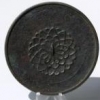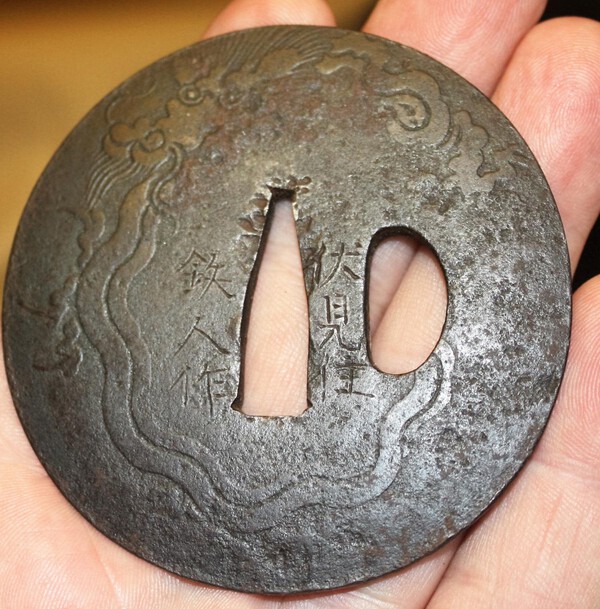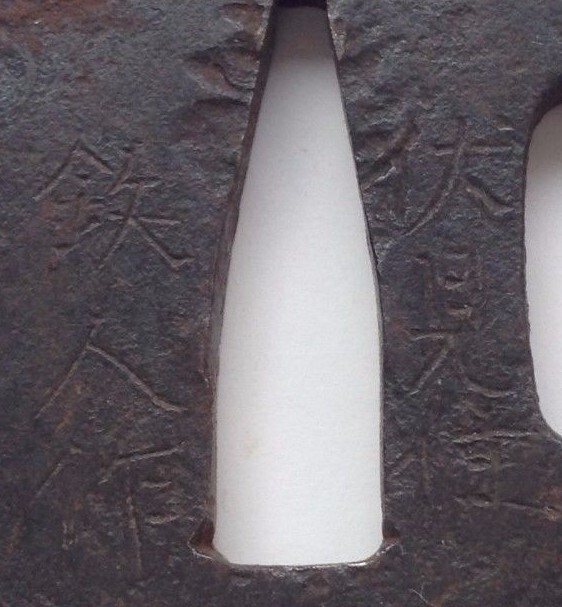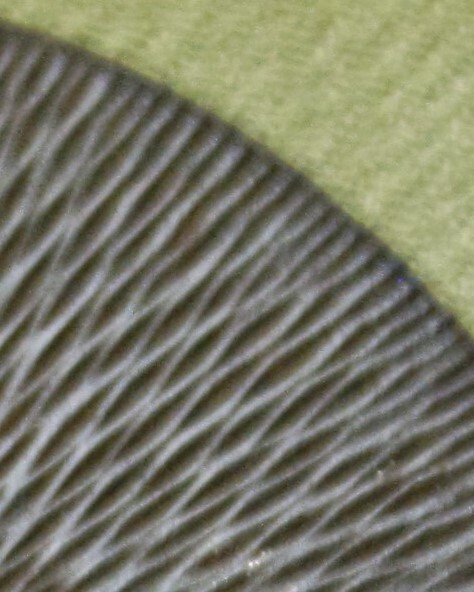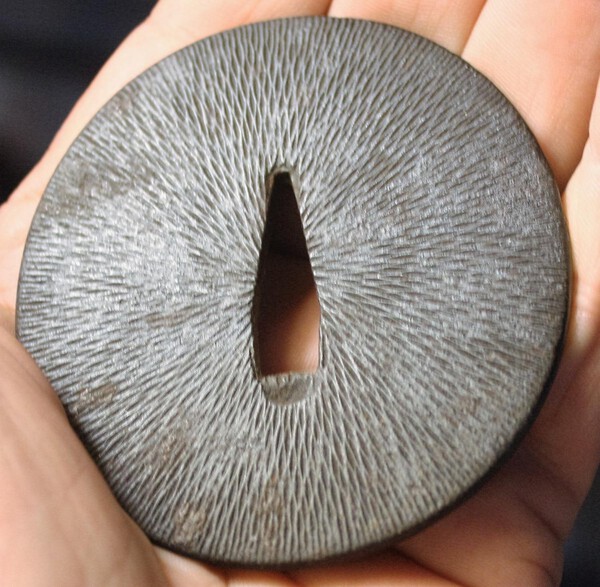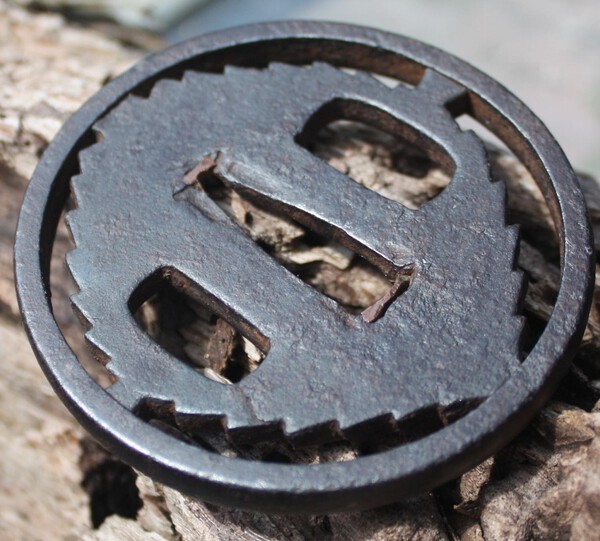-
Posts
290 -
Joined
-
Last visited
Content Type
Profiles
Forums
Events
Store
Downloads
Gallery
Everything posted by johnnyi
-
Hardcover copy came yesterday and it is wonderful! What a great job. Thank you for getting it out so fast! John Irwin
-
Thank you Mauro and John. Here's a link that makes a reference to acid etching which might lead somewhere. Hopefully David will chime in with what he might know about this maker. http://www.militaria.co.za/nmb/topic/9120-nthk-shinsa-results/ John Irwin
-
The tsuba seems to be chemically etched, unusual "go shape", and seems to read "tetsujin saku" (saga Kaneie??) and "fushimi sumi". I don't understand yet the correct use of the Haynes Index (which arrived today) and am relying on the seller's information and google. Any help on maker, date, or any other input on the tsuba would be gratefully appreciated. Thanks in advance. Kind regards, John Irwin
-
Arrived and it is wonderful! Thank you Markus! John Irwin
-
This thread was worth it for "rougher than an old goat's knee"
-
Thanks Jean. I had wondered why the border lines were straight, and Ford explained that once the diamond was punched then the tool could be nudged along to create the straight lines, and its suspected that's what was done here.
-
Ford, the picture is terrible and I apologize. Thank you very much for identifying how this was made; far more info then I hoped for. (can't believe you actually tested the boat hull punch! much thanks ) Not to embarrass with effusiveness, but I do speak for everyone in saying how fortunate we are here to have you share your knowledge with us. Thank you John Irwin p.s. No, my guess is not as good as your's
-
Thank you for helping answer a few questions. I know you see a lot of this motif, the halo in back of Buddha, or reflection on water, etc. and some are really awful and some of good. I bought this particular one because I liked it, it was cheap, and it looked like a skilled artist did the cutting. 73.8mm by 70.4 mm by 3.9 mm thickest point with very little taper towards rim. Forging layer visible on rim. Questions are these: What is the term for this type of carving using a chisel, not a rasp? About how long would it take a tsubako to accomplish? Is there a guess what school it might be? Thanks for your help! regards, John Irwin
-
Ha, yes, that's it in your post Richard. Thank you all of you! John
-
Christian, Your's were the words that have been bumping around in my head since I "pulled the trigger", but as usual you said them far more eloquently than I ever could Thank you for stepping forward with your honest appraisal, and an extra thanks to those who did not step forward. Regards, John p.s. just saw your post Arnold. Thank you
-
Hello This was a last minute impulse buy (trade cow for this or go for the magic beans) It is not in hand yet, so all I know is that its crude and size is roughly "2 3/4" dia." don't know thickness yet. It appears that the kogai hitsu-ana was a later addition, maybe even plugged at the same time? The other hitsu-ana conforms to the carving on the web, and probably lined with brass later?. My questions are these: When the Nakago-ana is chiselled around its entire perimeter is that any indicator of age? Is there anything about the shape of this nakago-ana which might point to age? Thanks for your help and patience. Kind regards, John Irwin
-
Hi Evan. For the gourd, if you want to start at the "beginning", I don't think there would be any better reading than "Myth and Meaning in Early Taoism: The Theme of Chaos (hun-tun) " by N. J. Girardot. Its a long intense read, but rewarding. For the Tao, others can probably give you better suggestions than I, but besides starting with the basics; "Tao Te Ching" (I like Hinton's translation best), "Chuang Tsu, the Inner Chapters", and maybe the book of Lieh Tsu (translation by A. C. Graham is okay) you might want to accompany all of them with Confucius and Mencius to give you a feel of the culture when Lao Tsu and Chuang Tsu were writing. Good luck and have fun with it, and again, cool tsuba! Regards, John Irwin
-
I had been admiring that tsuba, or one very much like it, for a while now. If you like symbolism which you obviously do, you have a beauty there. (the gourd really gets its just due in early Taoism, which is the root of Zen anyway, and worth investigating) John Irwin
-
http://www.militaria.co.za/nmb/topic/11578-kinko-san-mai-tsuba/
-
Hi Greg, neat tsuba. I am just learning so I can't contribute much, but wouldn't the sanmai construction show most clearly on the walls of the nakago ana if it was there? John Irwin
-
Hello Shinto. I know very little, and I have a question. It is an interesting fact you mentioned about banning the wearing of kogai or kozuko from 1714 to whenever. . Is there a pattern that you are aware of where tsuba made after 1714-? were made without the kogai and kozuko-ana? For instance can you date these certain edo period tsuba using this information? Thank you, John I
-
Both tsuba have arrived. Very happy with them. Better than the pictures. Thank you Grev. Regards, John (johnnyi)
-
Thanks Richard, but this photography stuff is out of my league. Your name came to mind though, and should frustration get the better of me I'll be calling, but as it stands now, I think Ford's explanations seem to fit really well. Funny about the shapes we try to interpret. I was trying to research one of Kissaki's wonderful Umetada "peach" tsuba he has for sale (signed) thinking perhaps it was actually an umi (plum). I stumbled upon a cross section of an asian pear (symbol of triumph) which looks so much like many five petaled flowers. we often see. regards, John
-
Thanks Alex, It is something I've investigated, but in the end I believe the "clock gear" is the bag a lot of these get thrown into simply because they have denticles. I believe this is a leaf, perhapsn a species of Japanese oak, said to be a symbol of strength. There are other example of this species of leaf or ones quite like it on tsuba (though maybe not s crude). For instance Shibui Sword website has a Ko Shoami 438366 that is similar and there are other, both single leaf and quadrafoil. The leaves are in one direction, tapering from large to small, of a number consistent with the oak leaf, and perhaps from a period before the "clock gear" tsuba became fashionable. Just my take, and I may be very wrong. Thanks, John
-
Thank you Ford, I've attempted scans, however the depth of the leaf being below the rim makes the image of the joint fuzzy and useless. If you see a continuation of the metal structure then that is pretty good proof as far as I'm concerned, As an aside, for an extremely crude looking tsuba it must have taken a very high degree of skill to manipulate tools around the upper-most meeting of the tip of the leaf and the rim.. As it stands, there is the illusion of a deep connection of two pieces which has been acknowledged by those who've seen it through a microscope. Your explanation however, explains it I think, for extremely deep chasing marks would form what look like cavernous pockets if the lines were roughly burnished over by even dragging a pin along them, which I'm sure must have been done in this tsuba's lifetime. What I don't understand yet is why such an illusion of a gap exists on one of the the inside walls where the post holding the leaf meets the rim but until I can get some useful images of it the issue is dead I think. So is this in fact an early Owari or later? Thanks once gain for the tremendous help! John
-
Thank you all. Ford, in a few hours when I return I will attempt some scans which might blow up better than my limited camera lens. Here are a couple more picture attempts, but not up to speed I'm afraid. You will notice shadow; that is deep recess separating two elements. Notice also in the pictures that the inner oak leaf is not set at a uniform depth within the rim, but is a bit askew (yet askew in a way that the plain of the leaf is flat, not random depth here or there, suggesting (showing) it was fitted in the rim a bit rudely. I will attempt when I return some scans which may blow up better that show two distinct elements tightly fitted, but with visible gaps, . Once more, thank you. John
-
Thank you Hoanh. Why I wonder(ed) Ono was because the tsuba was made in two parts which are so tight as to appear to be a single piece of iron. I thought maybe it was an attempt to mimic an Owari tsuba (edit: or Yagyu?), as from what I've read, Ono tsuba makers were "forgers"?? I know too little . Are such two piece tsuba researchable, for despite a lot of looking I can't find them? Thanks again, John
-
Hello Gentleman, This is a tsuba I acquired a couple years ago from AoiJapan which had been tentatively described as Owari. Since then under 60x magnification I've found that it is made in two parts, the center leaf apparently pressed into the outer rim. Tsuba measures: 68mm tall 65mm wide 5.8mm rim 5.2 center leaf The reverse by the small hitsu-ana shows forging of an exposed layer, and the central leaf shows quite a few "iron bones", less so on the rim. The iron seems very hard. The "joinery" of the two elements is tight, only visible as two under magnification as mentioned. I am very inexperienced in tsuba, but was wondering are "two piece" tsuba unusual, and could this one possibly be Ono? Thanks, Sincerely, Johnnyi (John)
-
Wonderful sale Grev. Thanks johnnyi
-
pm sent Johnnyi


